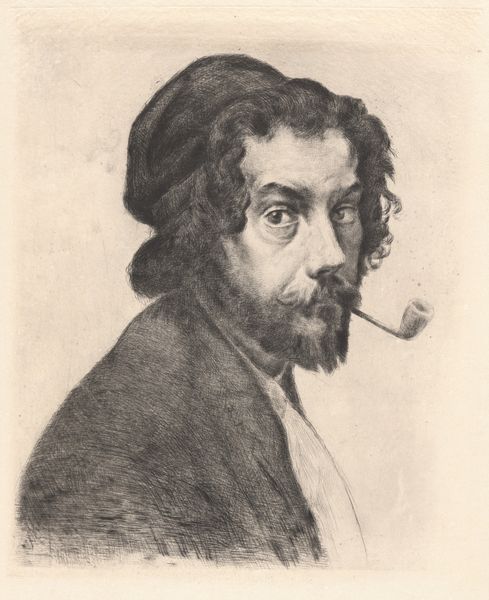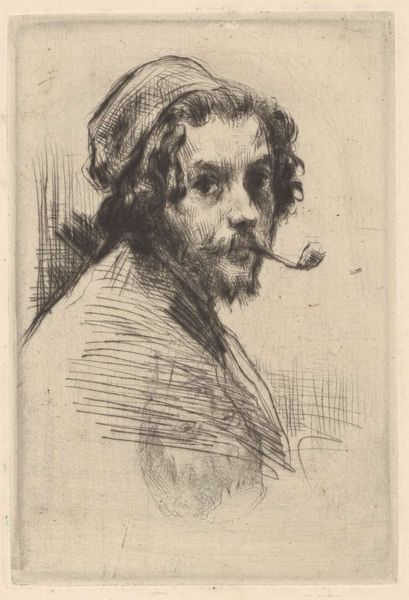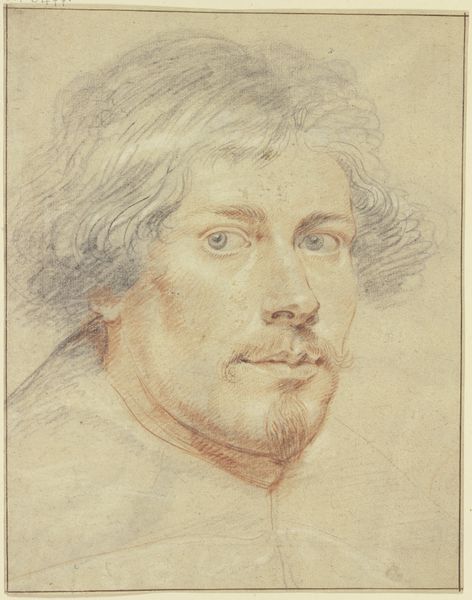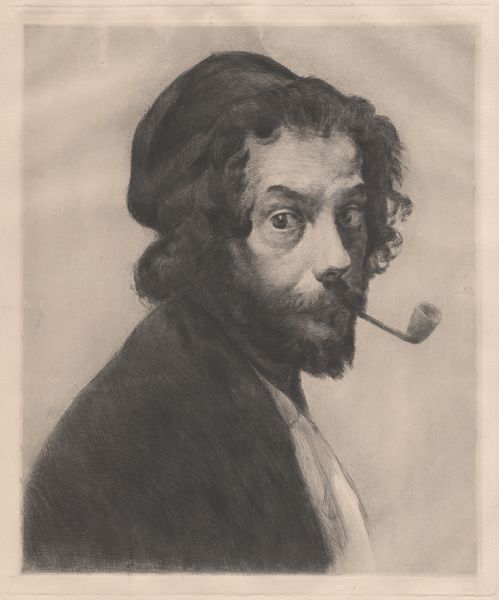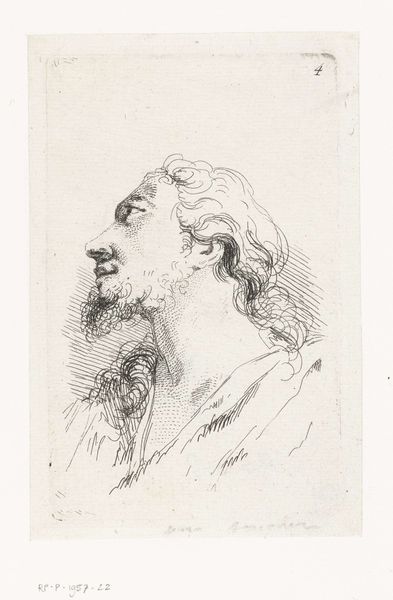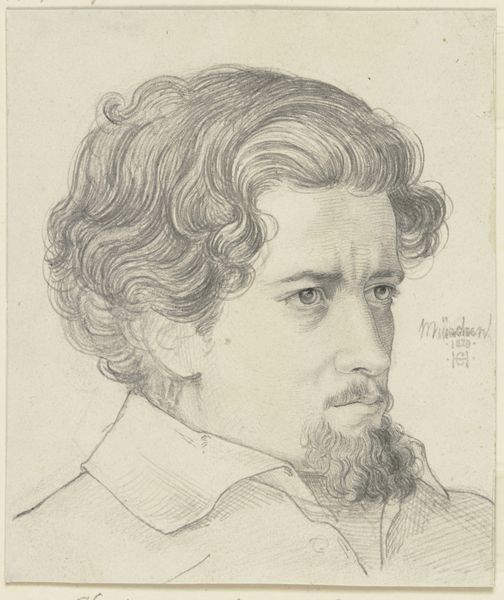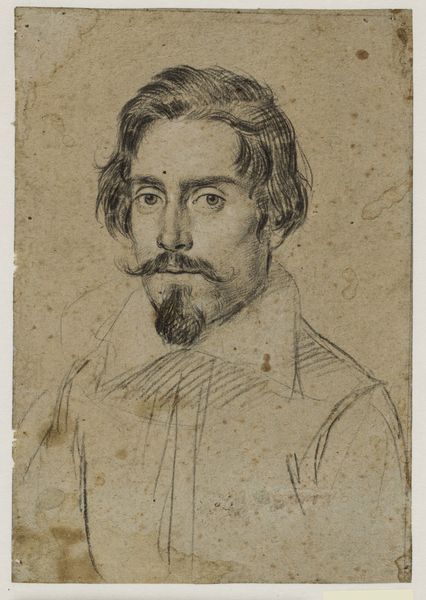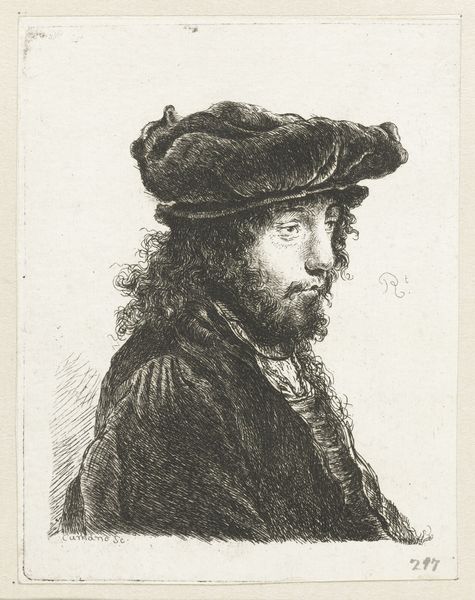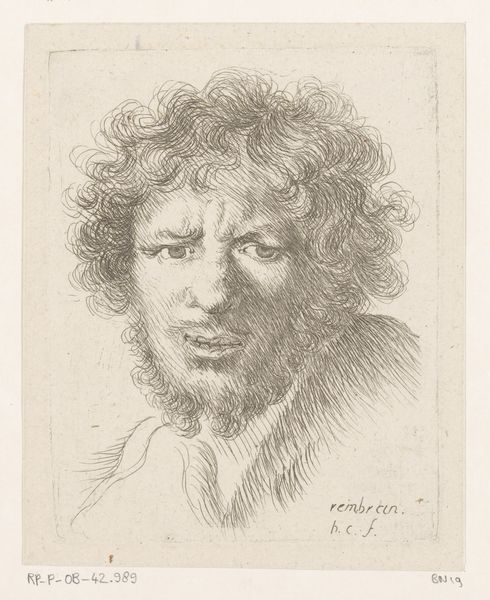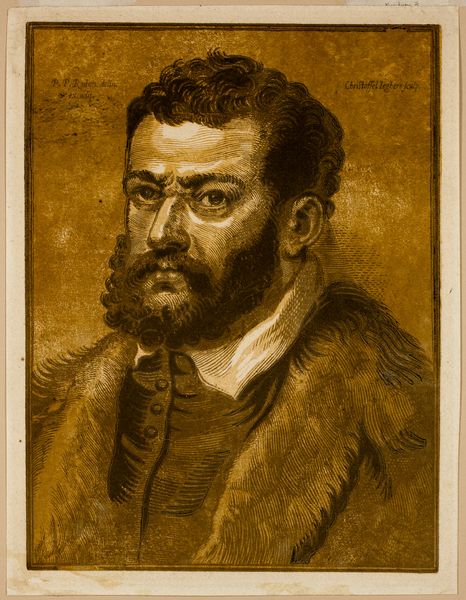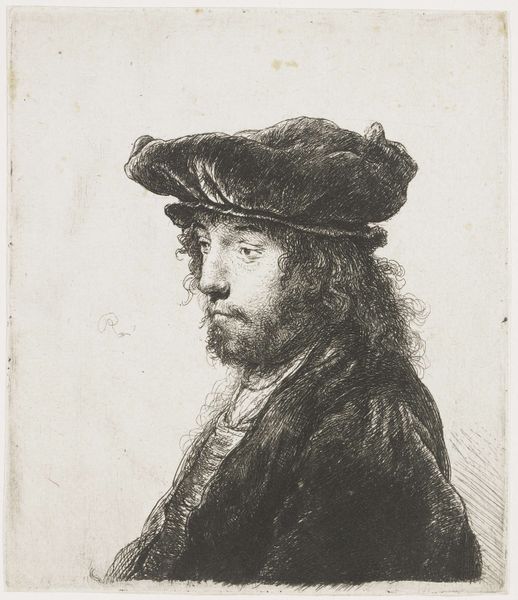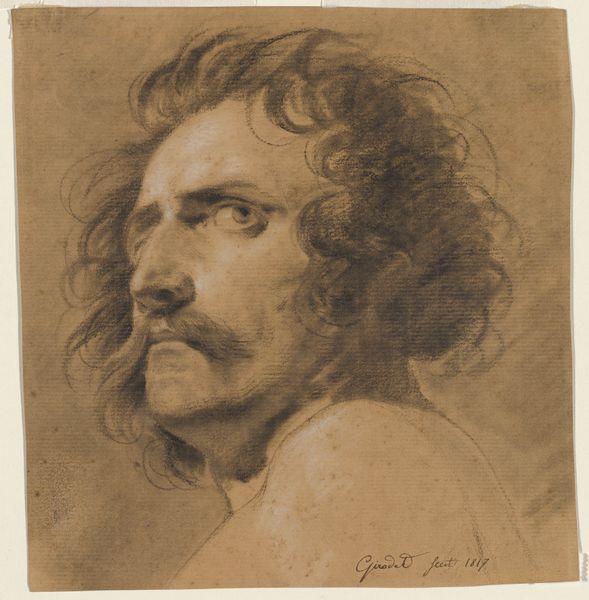
drawing, paper, pencil
#
portrait
#
drawing
#
self-portrait
#
paper
#
pencil drawing
#
romanticism
#
pencil
#
academic-art
Dimensions: 391 × 294 mm
Copyright: Public Domain
Curator: Here we have Auguste Barthélémy Glaize’s Self-Portrait, circa 1830, a pencil drawing on paper now held at The Art Institute of Chicago. Editor: There's an immediacy to this, wouldn't you say? That direct gaze combined with the rawness of the pencil strokes. He's really capturing a moment, not just a likeness. Curator: Indeed. Glaize was working within the conventions of academic art but was also swept up in the Romantic movement. Self-portraits served as demonstrations of skill and statements about the artist's identity and role in society. Editor: The paper itself looks like it’s aged nicely. And you can really see the buildup of graphite in the beard and hair – areas where he seems to have worked and reworked the texture. Makes you wonder about the quality of pencils available back then, and how it shaped the possibilities. Curator: The prevalence of drawings and self-portraits in this period reflected a shift in artistic training and professional aspirations. Glaize was not just an artist, but he was also participating in the construction of the image of an artist as an intellectual, perhaps even a bit of a bohemian. Editor: It is interesting, isn't it? This self-awareness, this curatorial look from artist to viewer, combined with the raw materials... paper, pencil, light. The means are simple, accessible, almost humble, yet the result is this intensely personal statement. I keep thinking about his hands at work; it wasn't just about an idea; it was physical. Curator: Yes. In many ways, this piece acts as a material representation of an artist claiming his space in the changing social and political landscape of the 19th century. The Napoleonic era’s focus on individuality had truly changed society’s view on artistic vision and output. Editor: Exactly. Seeing the world filtered through his hands, through these materials... It collapses the distance between us and the artist, makes his declaration even more potent. Curator: It's a statement of intent, then, in charcoal and paper, not just a fleeting likeness. Editor: And to consider those materials, that physical connection to creation... that shifts our perspective. Thanks to that, the artwork takes on a new light for me.
Comments
No comments
Be the first to comment and join the conversation on the ultimate creative platform.
